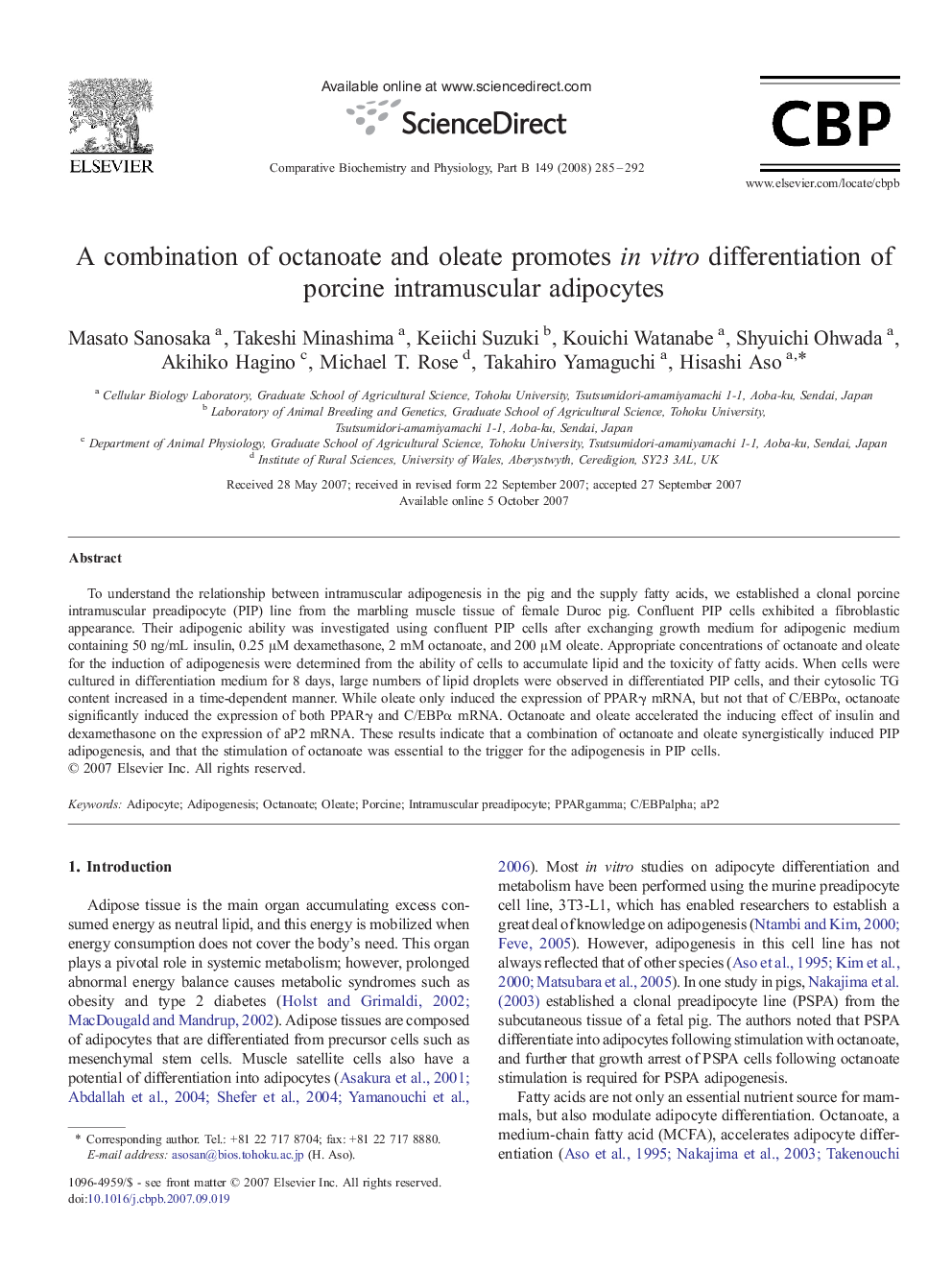| Article ID | Journal | Published Year | Pages | File Type |
|---|---|---|---|---|
| 1976359 | Comparative Biochemistry and Physiology Part B: Biochemistry and Molecular Biology | 2008 | 8 Pages |
To understand the relationship between intramuscular adipogenesis in the pig and the supply fatty acids, we established a clonal porcine intramuscular preadipocyte (PIP) line from the marbling muscle tissue of female Duroc pig. Confluent PIP cells exhibited a fibroblastic appearance. Their adipogenic ability was investigated using confluent PIP cells after exchanging growth medium for adipogenic medium containing 50 ng/mL insulin, 0.25 μM dexamethasone, 2 mM octanoate, and 200 μM oleate. Appropriate concentrations of octanoate and oleate for the induction of adipogenesis were determined from the ability of cells to accumulate lipid and the toxicity of fatty acids. When cells were cultured in differentiation medium for 8 days, large numbers of lipid droplets were observed in differentiated PIP cells, and their cytosolic TG content increased in a time-dependent manner. While oleate only induced the expression of PPARγ mRNA, but not that of C/EBPα, octanoate significantly induced the expression of both PPARγ and C/EBPα mRNA. Octanoate and oleate accelerated the inducing effect of insulin and dexamethasone on the expression of aP2 mRNA. These results indicate that a combination of octanoate and oleate synergistically induced PIP adipogenesis, and that the stimulation of octanoate was essential to the trigger for the adipogenesis in PIP cells.
